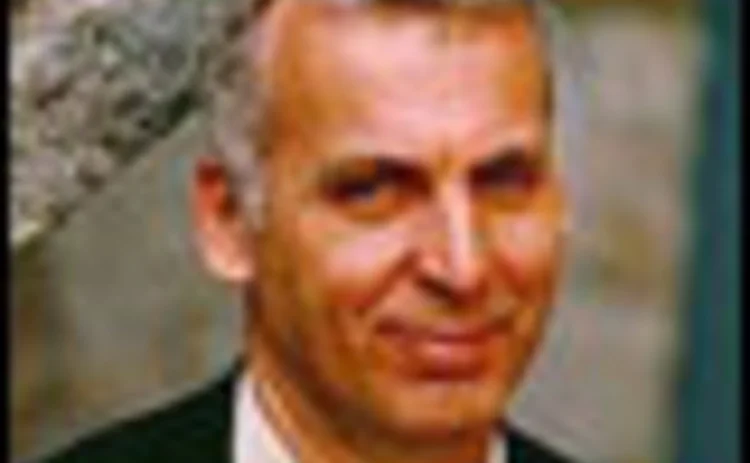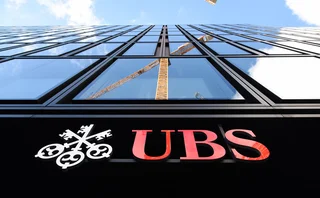
The iconoclast of Brooklyn
Victor Niederhoffer was one of the world’s best-performing hedge fund managers. Then he lost it all. But now the renowned speculator and five-times US squash champion has bounced back. Navroz Patel talks to him about his return from the brink

Niederhoffer launched his current fund – which has around $100 million worth of assets under management – back in January 2002. Called Matador, the fund has turned a profit in each of the past 20 months – beating the market by around 50% on a cumulative basis since its inception. The fund focuses on US equities and exchange-traded equity derivatives and is offered exclusively to clients of Octane – an alternative investment adviser in Switzerland. “In essence, we identify anomalies in the empirical distribution of current prices – relative to our predictions – then exploit these in a risk-controlled way,” he says.
With a staff of around 20, his current operation’s head count has now eclipsed that of his previous investment firm, Niederhoffer Investments, during its heyday a decade ago. This is something of a milestone for Niederhoffer, given the stratospheric status he achieved in the first half of the1990s.
Following the crash of 1987, he averaged an annual return of around 30%. He then went from strength to strength, and was named the best US commodities fund manager by Business Week in 1994. According to one performance database, he was the top-ranked manager in 1996 – a feat that he had already achieved in several previous years. Regarded as a gifted trader on the Street in the early part of the decade, Niederhoffer underwent something like an apotheosis in the investment community. But in 1997, a very human trait – competitiveness – led to his undoing. During that fateful year, Niederhoffer’s world collapsed as he lost a fortune. Things got bad. In fact, things got really bad.
Some have suggested that Niederhoffer’s undoing resulted from him believing his own hype, but he refutes the accusation. “I did not think I was infallible. I was simply upset that I was only ranked number two. I wanted to be number one again,” he says. “That’s a much worse, much more unfortunate state to be in.”
This unfortunate state of mind led him into danger. In 1997, he bet heavily that the Thai baht would rise; he was to be proven wrong. During August, he lost nearly half of the $130 million fund he was managing as the baht fell. “I reached for things that had a qualitative, but not quantitative similarity [to previously successful strategies]. Basically, I got killed in Thailand,” he says.
The impact of the burgeoning Asian crisis then rippled across the globe. And in October, another boldly bullish position effectively wiped out Niederhoffer’s funds. Convinced that the index would rise, he had sold put options on the S&P 500 index. Unfortunately, US stock markets went into free fall. On October 27, 1997, the Dow Jones industrial average fell by more than 7% – its largest single-day percentage drop. Trading of the most popular index derivative, the S&P 500 futures contract, was halted on several occasions as plummeting indexes caused exchanges to trigger circuit-breakers – effectively rules whereby markets are temporarily closed to restore orderly function.
A story that appeared in USA Today a few days later quoted from the memo Niederhoffer sent to his investors: “We took risks. We were successful for a long time. This time we did not succeed, and I regret to say that all of us have suffered some very large losses.” Niederhoffer felt aggrieved. He brought a legal action against an options exchange on behalf of his customers claiming that options were unfairly marked against him at much higher than market prices. The litigation was eventually settled in a manner mutually satisfactory to both sides. Niederhoffer took the entire amount of the settlement and distributed it to his clients without any deductions for the large legal fees incurred.
After being sacrificed on the altar of liquidity risk, Niederhoffer was racked with guilt. As mentioned, he would go on to reimburse investors, but in the immediate aftermath of his losses, he was depressed. He feels able to joke about it now: “To use a squash analogy, my strings were broken, I was suffering from heat exhaustion and my jock was askew.” In addition to losing investors’ money, he lost his business, a lot of his family’s money, a lot of his friends’ money, and consequently lost many friendships. It was around this time that Niederhoffer’s long and close relationship with George Soros faded away.
Battering
His self-confidence also took a battering. “You have to remember, until 1997, I had not lost money for a single one of my hundreds of customers in nearly two decades,” he says. Niederhoffer seriously considered giving up investing. Sport has always played a big part in his life. During the 1960s and 1970s, he won a host of major squash tournaments – including five US championships. He considered teaching squash, but says he could not get a job because a rule change had rendered his coaching qualification out of date.
With his six daughters’ college tuition fees to pay, he decided that there was only one option: start investing again. The problem was, of course, he had no money. So, it was time to free some capital. “I mortgaged myself to the hilt and sold a lot of my assets,” he says. In addition to selling his stake in a small investment bank, Niederhoffer sold the family silver, literally. Throughout 1998, he sold items from his large collection, culminating in the sale of lot valued at around $3 million at Sotheby’s in New York.
After a year-long hiatus, Niederhoffer began trading small amounts through a fund called Wimbledon. Lessons learnt on the squash court came in handy. “Whenever I had disasters in my sporting life, I went back to the fundamentals,” he says. And it is the prediction of market moves that is fundamental to Niederhoffer’s investment technique. He first developed a pattern prediction program back in the 1970s. “It’s similar to the LIM [Logical Information Machine] product, except that mine was developed around 15 years earlier, and is faster,” he says, referring to a popular piece of software offered by Chicago-based LIM that allows traders to do historical analysis and test out trading strategies.
So, by the end of 1998, Wimbledon was up and running, with its trading underpinned by a modified pattern prediction program. “I rethought it all. Procedures were developed to ensure I would not become vulnerable, as I had before,” he says. An important element of his revised approach is to be more attentive to the path, or evolution, of market prices in addition to the ultimate price reached.
Alongside such technical adjustments, Niederhoffer changed his approach in another significant way. He decided to only trade the US equity markets; foreign markets and fixed-income currencies were all eschewed. Working alongside the few staff that had remained loyal during his time of woe, Niederhoffer rode out the tumult caused by the fallout from the demise of Long-Term Capital Management and began to make money again.
Following these first small steps back into the market – that is, managing money for himself and some friends who had enough faith to stick with him – Niederhoffer is now getting back into full stride. In addition to managing assets as a sub-adviser for Octane, he plans to soon offer a fund in his own right. He declines to discuss details, but any investor that lost money with him in 1997 will not have to fork out any fees if investing in the fund.
As evidenced by some of the almost gleeful stories about his funds’ meltdown at the end of 1998, Niederhoffer’s eccentric character, success and iconoclasm have led some in the market to perceive him as arrogant. But this assessment does him an injustice. He is certainly driven. How else would you explain his achievements? Raised in a working-class neighbourhood of Brooklyn, the son of a policeman went on to study at Harvard, obtain a PhD from the University of Chicago, become a renowned speculator and one of the best squash players of his time.
His success in squash is not only remarkable in its own right, but also indicative of his character. Before he went to Harvard in 1960, he had never played the game. By the time he had graduated, he was the national inter-collegiate champion. And within six years of first picking up a squash racket, he held the US national title. Niederhoffer trained harder than any of his squash contemporaries; his style was methodical and efficient rather than pretty.
That’s not to say his games were dull. He was not averse, on occasion, to turning squash into more of a contact sport, according to his contemporaries in the game. Early on in his career he had a reputation for not being a shrinking violet when it came to confronting referees about decisions that were, in his opinion, questionable. Indeed, one particularly heated match in 1964 resulted in an opponent inflicting a bloody nose on Niederhoffer, who was subsequently reprimanded by the sport’s governing body for his verbosity.
His outspoken nature is manifest in his writing too. The year before his disaster in 1997, he published a critically acclaimed autobiography, Education of a Speculator. Niederhoffer’s latest book – Practical Speculation – was co-authored with writer Laurel Kenner. It has not been widely reviewed – something that Niederhoffer ventures is possibly the result of the book’s content: it doesn’t hold back from pointing out the flaws of the current gods of the investment world. Even Warren Buffet – the so-called Sage of Omaha – falls within the book’s sights. Published around a year ago, it has failed to match the commercial success of his previous tome.
Irrespective of this, Niederhoffer confidently pinpoints two unique attributes he believes he has brought to the world of investing: a largely unrivalled practical prowess in short-term forecasting, and an empirical approach to option valuation. “We’re always honest with investors: you can’t make a lot of money without risk,” says Niederhoffer, whose grandfather – like so many other investors – learnt this painful lesson during the crash of 1929. “Making directional bets will always be fundamental to what I do,” he says.
Only users who have a paid subscription or are part of a corporate subscription are able to print or copy content.
To access these options, along with all other subscription benefits, please contact info@risk.net or view our subscription options here: http://subscriptions.risk.net/subscribe
You are currently unable to print this content. Please contact info@risk.net to find out more.
You are currently unable to copy this content. Please contact info@risk.net to find out more.
Copyright Infopro Digital Limited. All rights reserved.
You may share this content using our article tools. Printing this content is for the sole use of the Authorised User (named subscriber), as outlined in our terms and conditions - https://www.infopro-insight.com/terms-conditions/insight-subscriptions/
If you would like to purchase additional rights please email info@risk.net
Copyright Infopro Digital Limited. All rights reserved.
You may share this content using our article tools. Copying this content is for the sole use of the Authorised User (named subscriber), as outlined in our terms and conditions - https://www.infopro-insight.com/terms-conditions/insight-subscriptions/
If you would like to purchase additional rights please email info@risk.net
More on People
People: Isda taps four new directors, O’Callaghan joins CA, Berlinski quits Goldman, and more
Latest job changes across the industry
People: Citi snags Raghavan, SocGen bags Estrada, all change at NYCB, and more
Latest job changes across the industry
Kane to leave Citadel Securities for senior Miax role
Options exchange has been on a four-year acquisition spree
Asia moves: senior hires at Millennium, Citi, SMBC and more
Latest job news from across the industry
Ken Pang set to join Millennium as Asia equities head
Former Credit Suisse markets co-head joins hedge fund’s Hong Kong office
People: Risk shake-up at Santander, JPM juggles markets, and more
Latest job changes across the industry
People: UBS rejigs EQD, risk head departs; Rustad joins buy side, and more
Latest job changes across the industry
Rustad re-emerges at Taula Capital
Former JP Morgan clearing head to help prepare for Q2 fund launch
Most read
- Top 10 operational risks for 2024
- Top 10 op risks: third parties stoke cyber risk
- Japanese megabanks shun internal models as FRTB bites







